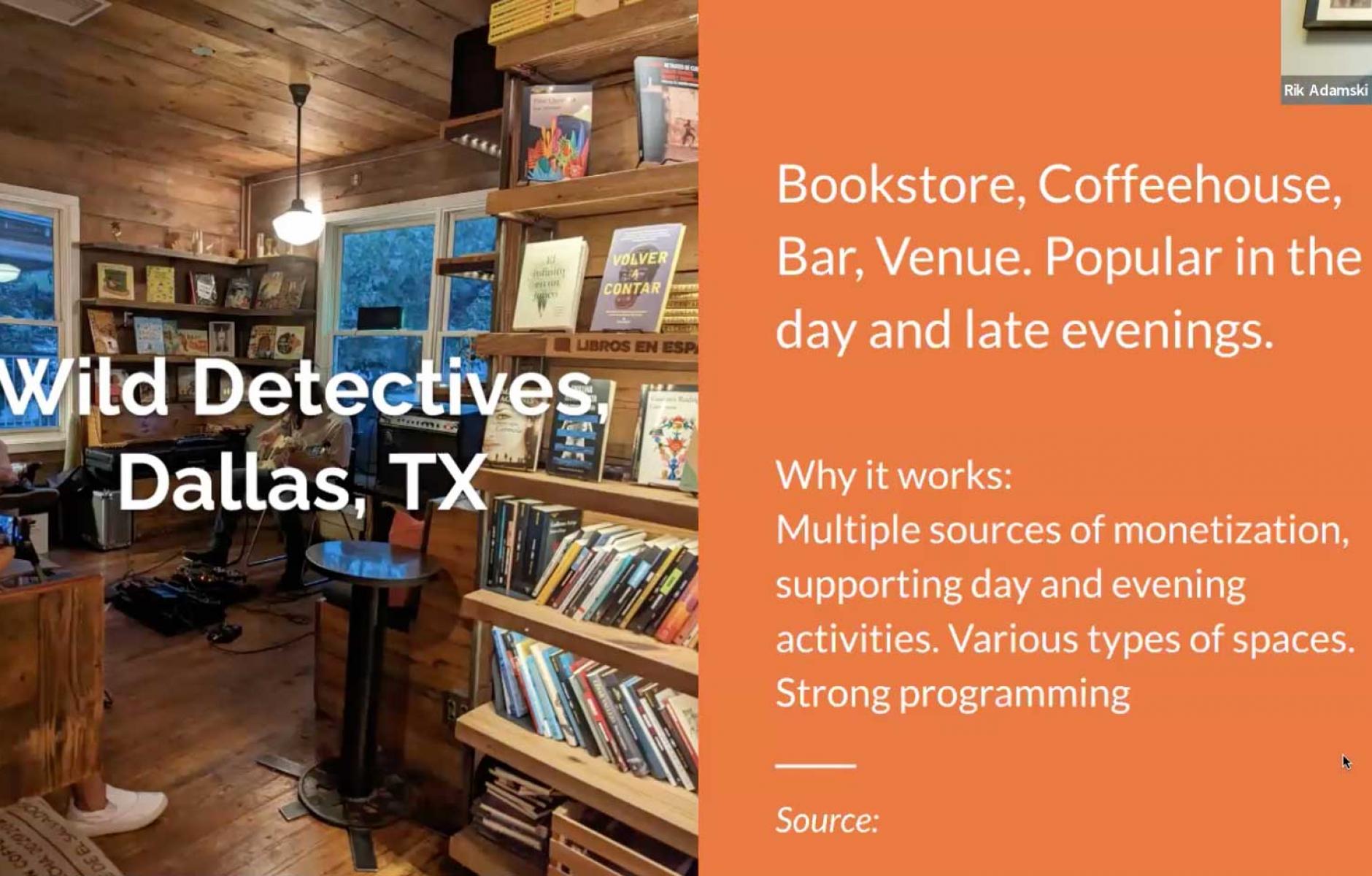
Vanishing third places and what can be done
“Third places” are economically, socially, and culturally important, serving as much of the glue that keeps neighborhoods together. However, they have long been vanishing and weakening, according to Jaime Izurieta and Rik Adamski, who presented to CNU’s On the Park Bench.
The trend has been underway for decades and accelerated significantly since the pandemic started, notes Adamski, president of the Dallas planning firm Ash+Lime. But new times require new strategies to bring them back. Izurieta is an architect and president of Storefront Mastery.
Ray Oldenburg coined “third place” in his 1989 book The Great Good Place to refer to gathering places that are neither home (first place) nor work (second place). Classic examples are neighborhood pubs or coffee shops, but they also could be bookstores, libraries, or other hangouts where people can congregate and connect with others. “Conditions are different now, but I don’t think the basic traits are different from what they were at the time,” Adamski says.
Adamski says the third place is open to a broad range of people, it’s leveler (social status doesn’t matter), and conversation is the main activity. It’s a home away from home. Third places are declining because of economic, social, behavioral, technological, and policy changes. People’s lives are more organized and structured, Izurieta explains. Instead of just going to a coffee place, people make an appointment to have coffee next Thursday, he says. “Another trend is centralization. As we look at the landscape of our cities, we see larger buildings and spaces, and there is not as much room for the smaller third places.” Social media has become ubiquitous since 2010. Moreover, we have shifted from a high-trust to a low-trust society, he explains, “which is felt in the reluctance of people to hang out in public spaces.” Policy changes have also been a fact, he explains: Zoning changes “forbid the organic emergence of third places and make cities inaccessible.”
Why some third places are thriving
Adamski presented case studies of third places beating the trend and thriving.
- Wild Detectives is a bookstore, coffeehouse, bar, and venue in Dallas, Texas. It is vibrant all day long and well into the night, he says. It has multiple revenue sources, including a surprising 30 percent of total sales from books. It has indoor and outdoor space and programming. “If you are slinging coffee, it doesn’t matter how much your are charging for a latte, you have to combine it with something else to make it work as a third place,” Adamski says.
- Central Arts of Hurst and Bedford, Texas, is a venue, gallery, arcade, and classroom located in suburban strip shopping centers. You can drive by and not know they are incredible places. Two locations are run by a not-for-profit that works with a developer who has underutilized space. “This is a labor of love. There are people willing to do this, but it must be supported.”
- Opening Bell is a coffeehouse and venue in Dallas, Texas. It is part of a large residential building and serves as an amenity, so it is a loss leader.
- Patchouli Joe's Books is in Denton, Texas. It is a bookstore with games, coffee, and miscellaneous goods. Why it works: It has nooks and crannies, games, seating areas, free coffee, and a relaxing environment, Adamski says. It is located in a college town. It is very consciously set up as a third place, and this helps them to sell books.
- FireHouse Gastro Park in Grand Prairie, Texas, is a bar, restaurant, and coffeehouse with different indoor and outdoor spaces. It is well programmed, and they have outdoor games and furniture. It is open to people of all ages.
Adamski says there was a time when these places would happen naturally, when there was less barrier to entry. People who start these places need to understand the model and that you need to take creative approaches to make them work. Cities, towns, and main street managers need to support this kind of place. See the whole webinar:




